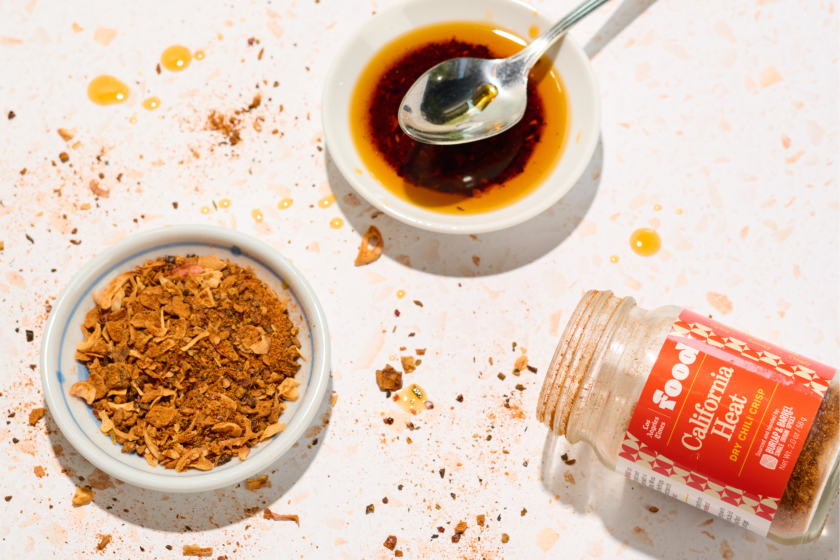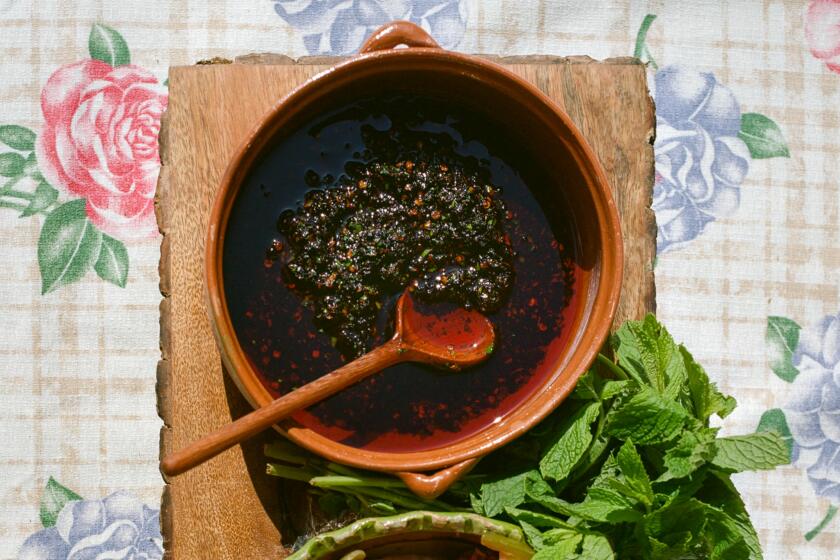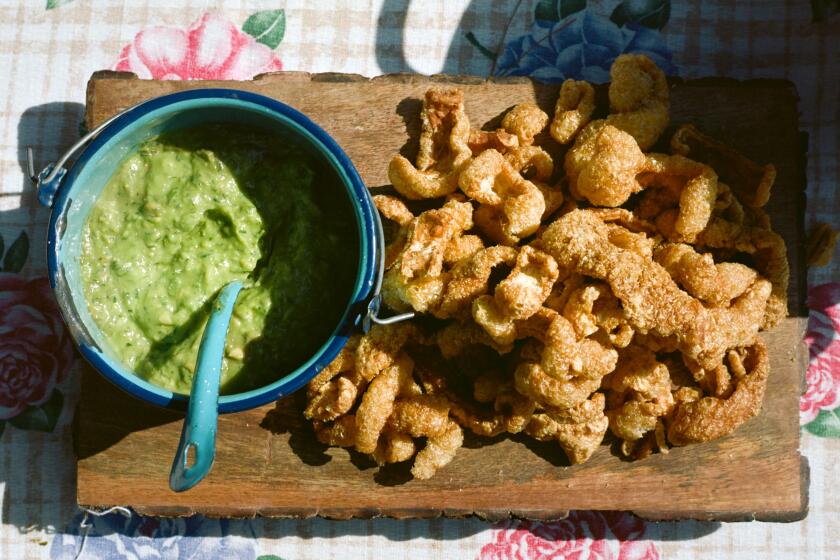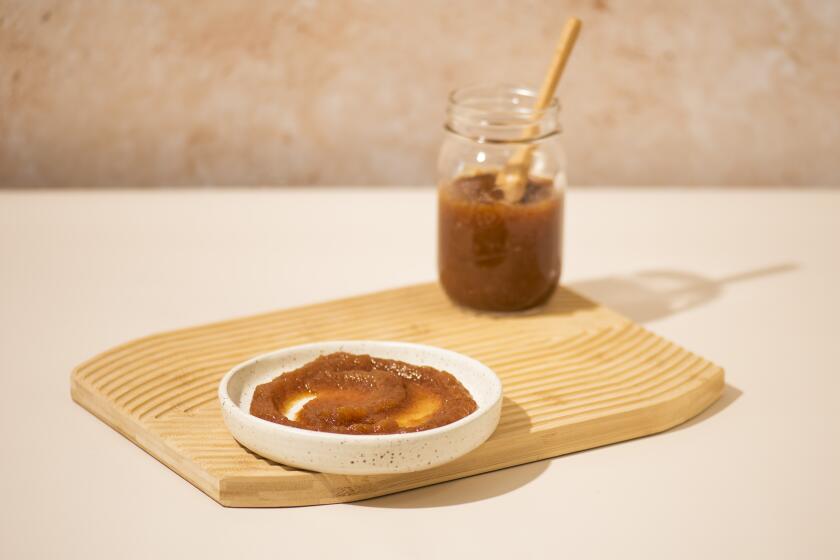Basic tomato sauce

In the middle of a transcendent BLT, I felt the sadness coming on. It happens every year, around the end of summer. How, I worry, can I possibly make it through another winter bereft of the pleasures of the season’s perfect tomatoes? We are blessed with superior vegetables year-round in California, but no one has yet figured out how to produce a winter tomato that is more than an unpleasant reminder of sunnier days.
But California farmers have outdone themselves this year: Tomatoes have been more succulent and plentiful than ever. So I armed myself with 20 pounds of my favorite, dry-farmed Early Girls from Dirty Girl Produce, an organic farm in Santa Cruz, and started working on how to preserve their intense, sweet essence through the dark winter ahead.
I had learned from the late Patience Gray’s “Honey From a Weed” of Puglian salsa secca, fresh tomatoes pureed, strained and left out to concentrate in the ardent Mediterranean sun. Every day, the volume is reduced by half, until after three or four days you have a stiff, glossy brick-red paste that tastes of nothing but tomatoes and the sun. Tomato paste, in other words, but without that tinny taste, or anything else to interfere with its pure tomato flavor.
This sounded perfect: less work than canning my own sauce, and the nature of the paste meant I wasn’t limited to plum tomatoes like Romas, which tend to be lacking in the flavor department. I chose Early Girls, but you can use whatever tomato you love best.
Just make sure your love is based on flavor, and not on the transitory pleasures of fancy colors and labels. And if you buy in bulk, your farmer will probably give you a discount.
But how to replicate the slow inferno of a Puglian summer in my gas oven? Paul Bertolli, former chef at Chez Panisse in Berkeley and Oliveto in Oakland, had the answer, which he calls conserva, in his superb book, “Cooking by Hand.” Six hours or so in a slow oven transforms 20 pounds (you can make as much as you want in increments of 5 pounds) of fresh tomatoes into four to five pints of a miraculous substance that’s both more intense and more useful than canned tomato sauce, and dramatically sweeter and more tomato-y than canned paste. It’s a secret ingredient you can add to virtually any winter dish to faithfully recall the glories of summer, and give new depth of flavor to your cooking.
Use it a teaspoon at a time -- it’s powerful stuff -- in any tomato-based pasta sauce, pot roast or daube, braised meat or vegetables, risotto, gravies, soups and stews. A spoonful of the conserva gives risotto a subtle richness without tasting strongly of tomato, and it adds the deep tomato flavor of slow cooking to a 20-minute pasta sauce. It’s delicious as an addition to canapes, and even by itself, on toast.
But first, you will make a mess.
You will need a food mill, your biggest saute pan, and one half-sheet pan and two half-pint canning jars for every 5 pounds of tomatoes. A food processor might be handy for chopping the tomatoes, but not strictly necessary.
The process is simple: Wash the tomatoes, dry them, chop them, saute them briefly, strain them through the food mill, and cook the heck out of them in a slow oven.
I discovered that it was a bad idea to start this after dinner on a work night. Because my oven can handle only two sheet pans at a time, I had to do 20 pounds in two batches. The first night, when I started nodding off around midnight, I decided it would be OK to turn the oven to warm while I got a little sleep.
It was not. I woke up to something that looked like tomato-flavored fruit roll-ups stuck to my sheet pans. Actually, it tasted pretty good, but it was definitely not paste.
But I laboriously scraped it into the food processor, added a little unreduced tomato puree and olive oil, and pulsed it back into shape.
Lesson learned: If you need a nap, just shut off the oven until you get up. After all, the plates of salsa secca that adorn Puglian rooftops have to rest when the sun goes down.
You need to keep an eye on your paste, especially after the first hour, giving it a little stir every half an hour or so.
When the paste was done, I ran some canning jars through the “sanitize” cycle of my dishwasher (another option is to follow the instructions that come with the jars), filled them to an inch of the rim, added half an inch of olive oil, and put them in the fridge. That’s all there is to it.
*
Store summer in your fridge
All the recipes I have seen for this type of tomato paste are maddeningly vague about how long it will keep. Because the paste is not canned, there is no danger of botulism. The problem is mold, which can be slowed by refrigeration and maintaining a thick layer of oil on top.
Use only scrupulously clean utensils to retrieve the paste from its jar. If the paste looks or smells suspicious in any way, toss it. (I used half-pint jars, the smallest I could find, precisely for this reason: If I have to sacrifice one, I’ll have some backup.)
There is an elemental pleasure in preserving food, not just a masochistic reenactment of our ancestors’ labors. It’s a matter of flavor as much as necessity, something easy to forget in an era of season-less, jet-fueled gratification from Baja or Chile or New Zealand. What tastes better: milk or cheese? Some Spaniards would even argue that canned asparagus is superior to fresh.
I doubt anyone would claim that preserved tomatoes in any form transcend a perfect slice of ripe summer tomato. But as I spread a bit of conserva on a piece of toast and savor its powerfully concentrated essence, I start to think I could make the argument.
In a saute pan, cook the garlic in the olive oil for a moment over medium-high heat. Add the conserva, pepper, tomatoes and salt, and bring to a simmer. Lower the heat and cook, stirring occasionally, until the tomato pieces relax into a smooth sauce, about 20 minutes. Makes 1 1/2 cups. Serve tossed with pasta such as rigatoni (1 1/2 cups sauce for 1 pound of pasta).
Get our Cooking newsletter.
Your roundup of inspiring recipes and kitchen tricks.
You may occasionally receive promotional content from the Los Angeles Times.















